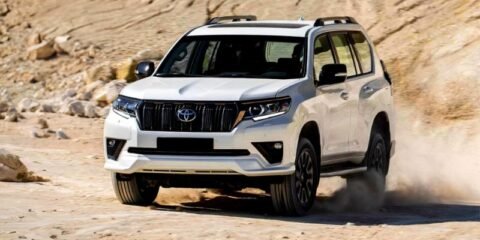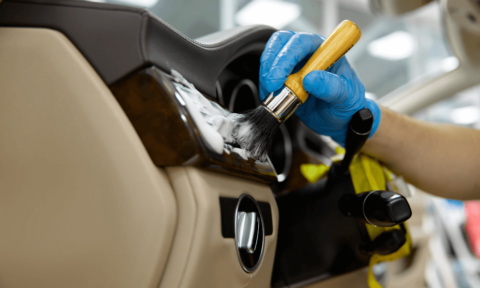Car prices are high, interest rates are higher, and everyone is looking to buy new vs. certified pre-owned cars without stretching their budget, without compromising on quality.
So, the big question is: should you buy brand new or go for a certified pre-owned (CPO) vehicle in 2025?
Honestly, this debate isn’t just about price tags. It’s about long-term value.
In order to understand the perspective of someone who wants to buy a new car in 2025, I visited my sister.
I’m someone who prefers to buy used products and sees more value in them, while she is the complete opposite of me. So there was no better person to talk to!
During our conversation, I realized a lot of things and how the point of view works for people who prefer to buy new instead of used.
In this post, I’m breaking down what each option offers—from warranties to depreciation, financing perks to resale value—so you can make a confident call.
Key Points Discussed in This Blog:
| Depreciation Impact New cars lose value fast, especially in the first year. CPO vehicles skip that steep initial drop, making them smarter for long-term value.s Warranty Coverage Both new and CPO vehicles offer warranties, but CPO cars include manufacturer-certified coverage at a reduced cost. Financing Options in 2025 While new cars often come with better financing terms, CPO deals have become more competitive thanks to manufacturer offers. Ownership Costs Insurance premiums, registration, and taxes are generally higher on new vehicles than on CPO models. Resale Value & Flexibility CPO cars can be easier to resell without as much financial loss, especially if you plan to upgrade within a few years. |
The Depreciation Dilemma: What You Lose Fast
Let’s start with the money you never get back: depreciation.
A brand-new car loses about 20% to 30% of its value in the first year alone.
If you buy a $40,000 SUV today, expect it to be worth only $28,000–$32,000 in 12 months.
That’s not a great feeling if you plan to switch cars every 2–3 years.
CPO vehicles, on the other hand, have already taken that hit, meaning what you pay is much closer to what the car is actually worth long-term.
This is why we always advise younger buyers to avoid buying new unless they’re planning to keep the car for at least 7–10 years.
Otherwise, the depreciation stings—and hard.
Warranty Coverage: New vs. CPO Peace of Mind
This is where things get interesting.
New cars obviously come with a full manufacturer warranty, often covering 3 years/36,000 miles for basic components and 5 years/60,000 miles for the powertrain.
But CPO vehicles?
They’re not far behind. Most brands offer extended limited warranties on top of the original factory coverage.
For example, a Toyota CPO vehicle adds 12-month/12,000-mile comprehensive coverage and up to 7 years/100,000 miles for the powertrain.
The key advantage of CPO warranties is that they’re backed by the manufacturer—not a third party.
That’s something I always tell people to look for when browsing used cars.
2025 Financing Landscape: How Rates Shift the Game
In a high-interest economy, how you finance your car can save (or cost) you thousands.
New cars usually get the best rates—manufacturers often offer 0% to 3.9% APR as part of promotions. In contrast, used cars (even CPOs) usually carry higher APRs.
As of May 2025, the average rate for used car loans is 7.63%, compared to 7.23% for new cars.
That said, many manufacturers now offer special financing deals on CPO vehicles, closing that gap.
For buyers with strong credit, it’s worth checking for low-interest CPO promotions.
You might find offers as low as 2.9% APR on recent-model-year certified cars.
Hidden Ownership Costs: What Goes Beyond the Price Tag
Buying the car is just the start—ownership costs can sneak up fast.
New cars tend to have higher insurance premiums.
Why?
Because their repair or replacement cost is greater. Add to that registration fees, which are often based on the vehicle’s value, and you’ve got a chunk of change going out the door.
CPO vehicles, being older and less expensive to replace, tend to cost less in both insurance and registration.
If budget is tight, that monthly difference matters more than you’d think.
I always recommend getting an insurance quote before you sign any paperwork—whether it’s new or used.
Tech & Features: New Doesn’t Mean Necessary
There’s this idea that CPO vehicles are outdated. This is completely false.
New vs. certified pre-owned cars is a topic of money and longevity. The discussion of tech in this comparison is moot.
A 2- or 3-year-old car still has Apple CarPlay, advanced driver assistance, adaptive cruise control, and sometimes even wireless charging.
Yes, new models might get the next-gen interface or upgraded screens—but most people won’t notice unless they’re real tech geeks.
For the rest of us, a 2022 or 2023 CPO offers 90% of the tech at 70% of the cost.
Resale & Trade-In Flexibility: Thinking Ahead
If you’re the kind of driver who changes cars every 3–5 years, resale value should be on your radar.
CPO vehicles are easier to resell without taking a huge financial hit.
Because you’re buying at a lower cost and depreciation slows after the first two years, you lose less when trading or selling.
New cars, however, often require a longer ownership period to recover the initial investment.
If you exit early—especially in the first two years—you’re almost guaranteed to lose money.
That’s why I usually suggest first-time buyers or growing families to go CPO until they’ve figured out their long-term car goals.
So, What’s Right for You?
If you love that new-car smell, have strong credit, and plan to keep the car for a long time—then go new.
But if you’re looking for smart value, modern features, and less risk of financial loss, CPO vehicles are the real sweet spot.
You get manufacturer confidence, lower depreciation, and more flexibility down the line.
Personally, when it comes to new vs. certified pre-owned cars, I will lean towards the latter.
There’s nothing wrong with buying a new car. In fact, some people go for a new car just for the experience.
But beyond feelings, I believe a CPO car gives you 80–90% of the benefits of a new car.
And in 2025, that’s a win in any car buyer’s book.







